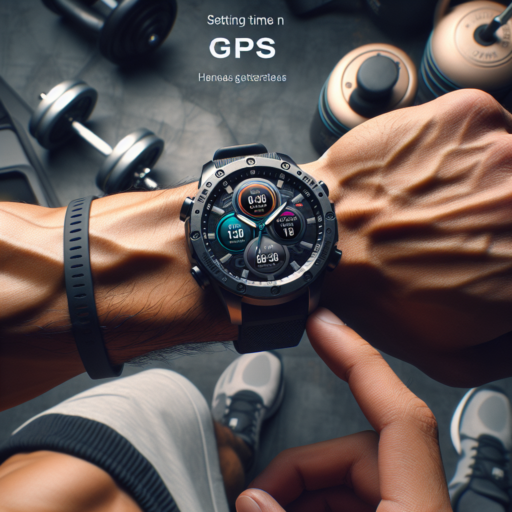Understanding Battery Settings on Your Device
Exploring the battery settings on your device isn’t just about seeing how much charge you have left. It’s a gateway to improving your device’s efficiency and longevity. The battery settings section, typically found within your device’s settings menu, provides a plethora of options and information that can help you manage your device’s power consumption more effectively.
Monitoring Battery Usage
One of the key features within your device’s battery settings is the ability to monitor which apps are draining your battery the most. This is invaluable for identifying which apps to close or uninstall to save battery life. Additionally, many devices offer a detailed breakdown, showing the percentage of battery used by each app, along with system services and hardware components.
Power Saving Modes
Most devices come equipped with various power saving modes that can significantly extend your battery life when you need it the most. These settings adjust your device’s performance and disable non-essential functions to reduce power consumption. Knowing when and how to utilize these modes can be crucial during long days away from a charger or in emergency situations.
Beyond just checking the remaining battery percentage, diving into the battery settings provides insights into health, usage patterns, and more. While it may seem daunting at first, taking the time to understand these settings can lead to better battery health and a more optimal user experience.
How to Optimize Your Battery Settings for Longer Life
Optimizing your device’s battery settings can significantly extend its lifespan and ensure it remains operational for longer periods. The key is to adjust settings in a way that reduces battery strain without compromising on user experience. Below, we delve into effective strategies to maximize your battery’s life.
Reduce Screen Brightness
Screen brightness is among the top culprits when it comes to draining battery life. By lowering your screen’s brightness, or enabling adaptive brightness which adjusts to your environment, you can greatly decrease the amount of power your device uses. This can be easily adjusted in the display settings of your device. Keeping your screen dimmer not only helps in extending your battery’s life but also is beneficial for your eyes.
Limit Background App Refresh
Many applications continue running and updating in the background, even when you’re not actively using them. This silent operation eats into your battery life. Turning off background app refresh for apps that don’t require constant updates is a simple yet effective way to conserve battery power. Navigate to your device’s settings, find the apps or general battery settings, and adjust accordingly. By doing so, you prioritize your battery’s energy for the tasks that truly matter to you.
Activate Power Saving Mode
When you’re looking to push your battery’s limits, engaging the power saving mode can be a lifesaver. Most devices come equipped with some version of this feature, which optimizes your device’s performance to prolong battery life. Power saving mode minimizes background data usage, reduces screen brightness, and limits CPU usage—adjustments that together can significantly extend your battery life. This option is perfect for long days out or when you anticipate limited access to charging points.
Exploring Advanced Battery Settings in Android and iOS
Both Android and iOS have evolved significantly over the years, introducing a range of features aimed at enhancing user experience. One area of particular interest is the optimization of battery life through advanced settings. In Android, users can delve into the ‘Battery’ section found within the Settings menu to explore various options that can help extend their device’s battery life. These options include the Adaptive Battery feature, which learns how you use your apps and allocates battery power accordingly, prioritizing your most-used apps.
Adaptive Battery and Optimization Features
In iOS, similar advancements have been made, with the introduction of the Low Power Mode being a game-changer for many users. This mode temporarily reduces background activity and automatic downloads, thereby extending battery life when needed. Meanwhile, Android’s Battery Saver mode functions similarly by limiting vibrations, location services, and most background data. Both operating systems also offer detailed battery usage statistics, allowing users to identify which apps are the most energy-consuming.
Customizing Battery Settings for Improved Efficiency
Moreover, both Android and iOS encourage users to delve into individual app settings to manage battery usage more effectively. This could involve adjusting app refresh rates, limiting background data usage for certain apps, or even forcing apps to sleep when not in use. By customizing these settings, users can significantly enhance their device’s battery efficiency, thus ensuring that their smartphones last longer throughout the day.
Exploring the advanced battery settings in both Android and iOS reveals a commitment from both platforms to offer users more control over their device’s energy consumption. Through careful adjustment of these settings, users can enjoy a more personalized and optimized battery experience, reflecting the ongoing evolution of smartphone technology.
The Ultimate Guide to Battery Management Settings
Understanding the intricacies of battery management settings is essential for maximizing the lifespan and efficiency of your electronic devices. Whether you’re navigating the power options of a smartphone, laptop, or any portable device, mastering these settings can significantly enhance your gadget’s performance and energy consumption. This guide aims to shed light on the crucial aspects of battery management that every user should know.
Optimizing Battery Performance
Optimizing your device’s battery settings is not just about extending daily usage but also about prolonging the overall life of the battery itself. Techniques such as adjusting screen brightness, enabling power-saving modes, and moderating the use of power-hungry applications can make a noticeable difference. Additionally, understanding the role of ambient temperature on your battery’s health is vital, as extreme conditions can adversely affect its longevity and performance.
Customizing Battery Usage for Apps
One of the most impactful ways to manage your battery life is to customize how individual apps consume power. Many devices offer the ability to see which apps are using the most battery and allow you to limit background activity or disable certain features within the app to save energy. This targeted approach ensures that only essential apps drain your battery, keeping your device on for longer periods.
By familiarizing yourself with the battery management settings of your devices, you can take proactive steps towards enhancing their efficiency and durability. Remember, effective battery management is not just a one-time setup but a continuous process of monitoring and adjusting settings to match your usage patterns and extend the lifespan of your devices.
Must-Know Battery Setting Tips for All Smartphone Users
For smartphone users, mastering battery settings is akin to unlocking a secret level of device efficiency. With the right adjustments, you can significantly extend the lifespan and daily endurance of your mobile companion. From dimming your display to managing app refresh rates, a few simple tweaks can make all the difference. Let’s break down some essential tips that every smartphone user should know to optimize battery life without compromising on functionality.
Adjust Your Screen Brightness and Timeout
One of the most power-hungry components of any smartphone is its display. By simply adjusting the screen brightness to a lower level that remains comfortable for viewing, and setting a shorter screen timeout duration, you can save a considerable amount of battery power. Most devices also offer an adaptive brightness option, which adjusts the display brightness based on the surrounding lighting conditions, further enhancing your battery savings.
Manage Background App Refresh and Location Services
Many apps continue to run and update in the background, even when you’re not using them. This not only drains your battery but can also consume unnecessary data. Dive into your smartphone’s settings and limit background app refresh only to essential apps. Similarly, consider tweaking your location services settings. Many applications constantly check your location, a process that significantly impacts battery life. By granting location access only when using the app, you can preserve your battery’s longevity.
Furthermore, actively closing apps that you’re no longer using can also help conserve battery power. Although many modern smartphones are designed to manage apps efficiently in the background, manually closing those not in use can reduce unnecessary battery drainage. By implementing these simple yet effective tips, smartphone users can enjoy extended device usage and overall better battery health.
Maximizing Your Laptop’s Battery Performance through Settings
Getting the most out of your laptop’s battery doesn’t necessarily mean you need to invest in expensive hardware upgrades. Often, optimizing your current settings can significantly enhance battery performance and longevity. By fine-tuning a few key settings, you can ensure that your device runs more efficiently, using less power without sacrificing functionality. This approach not only extends your laptop’s battery life on a single charge but also contributes to the overall health of the battery, potentially delaying the need for a replacement.
Adjusting Screen Brightness and Resolution
One of the simplest yet most effective adjustments you can make is to your screen’s brightness and resolution. The display typically consumes a substantial amount of power, and by lowering the brightness, you can substantially reduce energy consumption. Most laptops offer a brightness adjustment directly via the keyboard, enabling quick modifications based on your current environment. Additionally, consider lowering your screen’s resolution, as higher resolutions make your GPU work harder, thus consuming more battery. These changes, while seemingly minor, can cumulatively have a notable impact on extending your laptop’s battery life.
Managing Power Settings and Sleep Mode
Power Management settings in your laptop play a crucial role in conserving battery life. Operating systems like Windows and macOS provide built-in power saving modes that, when activated, optimize your laptop for better battery performance. These modes intelligently adjust system performance, reduce screen brightness, and limit background processes, among other modifications. Enabling Sleep Mode or Hibernate features when your laptop is not in use also greatly contributes to saving power. Instead of leaving your laptop running on full power during periods of inactivity, these features significantly cut down energy usage by putting your device into a low-power state.
Common Battery Setting Mistakes and How to Avoid Them
In the realm of electronic devices, ensuring your battery’s longevity and performance involves more than just regular charging. Often, it’s the little nuances in how we manage and set up our batteries that have significant impacts. Acknowledging and addressing common battery setting mistakes can dramatically improve the life span and efficiency of your device’s power source.
Overlooking Battery Optimization Features
One prevalent mistake is ignoring the built-in battery optimization settings available on most modern devices. Manufacturers often provide a range of options to enhance battery life, such as adaptive brightness, battery saver modes, and app sleep settings. Not utilizing these features can lead to unnecessary power consumption, shortening your battery’s life over time. Regularly diving into your device settings to adjust these features as per your usage patterns can make a world of difference in preserving your battery’s health.
Keeping Devices Plugged In At 100%
Another common oversight is leaving electronic devices plugged in for extended periods after they’ve reached a full charge. This habit can lead to battery bloating and reduce the overall battery capacity over time. Devices are generally designed to handle a specific number of charging cycles, and keeping them plugged in beyond 100% can strain and degrade the battery quicker than anticipated. To avoid this, it’s advisable to unplug devices once fully charged and consider unplugging before reaching 100% if you’re monitoring the charging process.
Incorporating these insights into your battery management routine can significantly enhance the longevity and performance of your device’s battery. By avoiding these common mistakes, users can ensure that their devices remain functional and efficient for a longer time, saving money and resources in the long run.
No se han encontrado productos.
Saving Battery Life: Settings That Make a Difference
Optimizing your device’s settings can significantly extend your battery life, ensuring that you remain connected and productive for longer periods. While many are aware of the benefits of reducing screen brightness, there are several other adjustments that can have a substantial impact on conserving power. Exploring these settings not only aids in extending battery longevity but also contributes to the overall efficiency of your device.
Adjust Screen Timeout and Brightness
One of the most straightforward yet effective ways to save battery is by adjusting your screen’s brightness and timeout settings. Dimming the screen when not in direct sunlight can drastically reduce power consumption. Similarly, setting the screen to turn off after a short period of inactivity can prevent unnecessary battery drain. Smartly managing these settings can make a noticeable difference in your device’s battery life.
Limit Background Data and App Refresh
Many apps continue to run and update in the background, even when not actively in use. This not only uses up data but also consumes a significant amount of battery. By restricting background data for apps that don’t require constant updates, you can considerably extend your battery’s endurance. Additionally, turning off automatic app updates and instead opting for manual updates can further reduce battery consumption without compromising the functionality of your device.
Decoding the Battery Settings Menu: What You Need to Know
In the realm of smartphone management, understanding the nuances of your device’s battery settings menu can significantly enhance both device performance and your own user experience. This section of your phone acts as the command center for managing power consumption, with various options that cater to different aspects of battery use and conservation. Navigating through these settings, you will encounter a variety of functions, from the display of battery health to the activation of power-saving modes, each designed to optimize your device’s energy usage.
Understanding Battery Health and Capacity
The battery settings menu often includes a feature that reports the health and capacity of your device’s battery. This is vital information because it helps you understand how much charge your battery can hold compared to when it was new. A declining battery capacity can lead to shorter usage times between charges, hence, monitoring this can inform you when a replacement might be necessary to maintain optimal performance.
Optimizing Through Power-Saving Modes
Most devices come equipped with multiple power-saving modes, each with its distinct advantages. Exploring these options within the battery settings can reveal ways to extend your device’s battery life without severely impacting its functionality. Whether it’s limiting background data usage or reducing screen brightness, these modes can be tailored to suit your needs and preferences. Furthermore, understanding the nuances of each mode helps in making informed decisions on how to conserve battery life effectively, especially during critical times when you need your device the most.
Venture into the battery settings menu of your smartphone to uncover these features and more. By taking the time to understand and utilize these options, you can ensure that your device runs efficiently, prolonging the life of your battery and enhancing your overall mobile experience. Remember, knowledge of your device’s battery management capabilities is a powerful tool in the era of constant digital connection.
Customizing Battery Settings for Optimal Usage and Health
Understanding and customizing the settings of your device’s battery can significantly impact its longevity and performance. Modern devices offer a plethora of battery settings that, when adjusted correctly, can enhance your device’s efficiency and extend its usage time. Delving into the battery settings might seem daunting, but a few simple tweaks can lead to optimal usage and improved battery health.
One crucial aspect to consider is the screen brightness and timeout settings. High screen brightness is one of the biggest energy drains on any device. Adjusting the brightness to a lower setting that is still comfortable for reading, and setting a shorter screen timeout, can save a significant amount of battery power. Additionally, activating your device’s battery saver mode helps by limiting background data and reducing or turning off unnecessary notifications.
To further customize your experience for better battery health, consider managing the number of apps running in the background. Many devices allow you to see which apps are consuming the most power, enabling you to make informed decisions about which apps to restrict. Switching off unnecessary features such as Bluetooth, GPS, and Wi-Fi when not in use can also contribute to conserving battery life. These settings adjustments not only ensure a prolonged battery lifespan but also contribute to a more efficient and personalized device usage experience.




